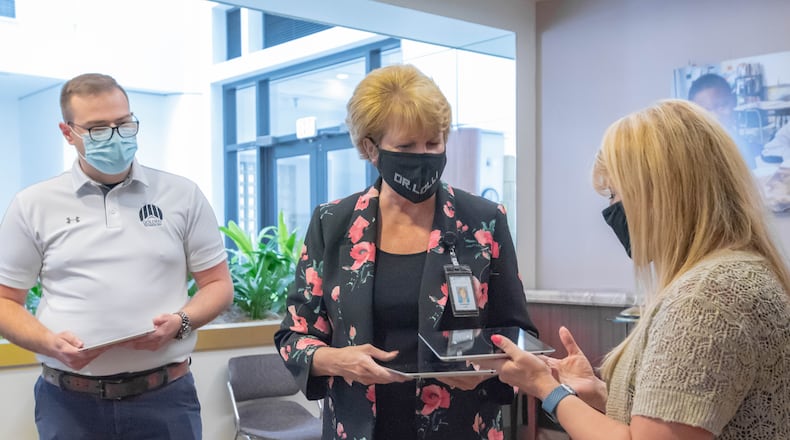Until recently, we expected to welcome students back in buildings and continue our recent upward movement in the ODE academic ratings. The high number of COVID-19 cases makes in person instruction inadvisable, so for the first nine weeks of school, we will operate with virtual, or online, instruction for students. Not ideal, but necessary.
To adapt and improve online learning quickly, Dayton Public Schools created a comprehensive virtual or online curriculum for students. COVID undoubtedly set achievement back, so to help our students to catch-up, we are focused on core academics. In difficult times, our educators have stepped up. We are teaching and serving students better.
Unfortunately, this late-breaking change to online education required the district to temporarily reduce staff in areas such as transportation, administration, school nurses, counselors, and art, music, and physical education teachers. How we educate students is temporarily changing, and so did our personnel needs.
Younger students will have lessons daily with their classroom teachers as well as small group times with their teachers. Students in grades 4 – 12 will follow the daily class schedule as closely as possible, but with students learning at home from teachers online.
Hand-on subjects – music classes, performance classes, art classes, and physical education among them – do not work as well virtually as in person. When there was a better alternative available, it made preschool, educational and financial sense to use it, and that led to temporary reductions in staff in those subjects.
Other examples of instructional changes in these areas: Music, art and physical education students will learn from high quality video content taught by DPS music, art and Physical Education teachers, with twice-weekly enrichment sessions in K – 6 and live art and music survey classes online for grades 7 – 8.
We will offer music and art survey and appreciation classes in place of performance classes. Students in grades 7 – 12 will have health classes instead of physical education.
Likewise, for parents will have access to video lessons and books from Preschool Promise rather than attempting to engage in a simulated preschool classroom absent sand and water tables, dramatic play centers, books and other essential learning materials.
We believe students will be far more likely to succeed this way, in part because most students do not have special art supplies, musical instruments, physical equipment, learning materials and facilities.
Dayton Children’s worked with us to ensure Student Resiliency Coordinators are available to manage student counseling needs. The health center at Roosevelt Elementary is open for all DPS families. A school counselor is still working in each building. Still, these areas all had reductions.
With students at home, there is also not enough work for nurses, bus drivers, school media specialists or counselors, because students are not in school buildings. Educational operations and services on line are different until we return to classrooms. We have worked to minimize the situation, but furloughs and temporary staff reductions are unpleasant, yet needed.
This is temporary. It is also painful, made only a little less so by the fact that the DPS-DEA Memorandum of Understanding provides affected individuals with health care paid at 100% by the Board of Education, because it affects our hard-working colleagues. Additionally, others that are furloughed receive the same benefit of health care paid at 100% by the Board of Education.
The DPS team loves learning. As such, we value our teachers and staff as we do our students and families. Their resilience and ability to adjust during a global pandemic is admirable.
Similarly, to help DPS students succeed, we have made temporary changes in our instructional methods. Those changes came shortly before the school year and called – educationally and financially – for a short-term, temporary reduction in staffing.
We do not take this situation lightly, and we are evaluating it carefully and regularly to make sure it is working. Meanwhile, we look forward to resuming school in person (as much as possible) soon and getting our temporarily furloughed personnel back to what they do so well – serving our students.
Mohamed Al Hamdani is president of the Dayton City Schools board president. Elizabeth Lolli is the district’s superintendent.


